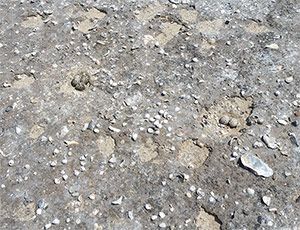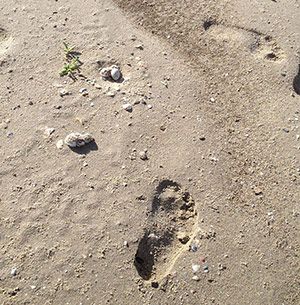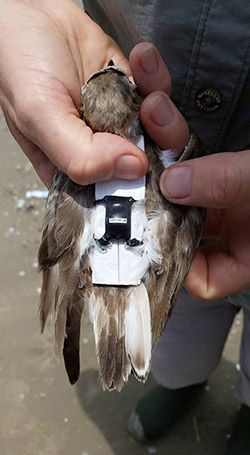Beach-nesting Birds Conservation Program
The Texas Gulf Coast is alive with birds year-round thriving in productive coastal habitats. The marshes, wood lots, prairies, and beaches host breeders starting in March and concluding in mid-August to early September. Birds that breed in the dynamic beach environment don't have the flare or cachet of the dramatic and colorful colonial waterbirds. They are often quite the opposite—furtive, subtly feathered denizens of dune, saltwort, and wrack eschewing attention. Our program focuses on three species: Wilson's Plover, Snowy Plover, and Least Terns. They were well served by their understated ecology until recent decades when their ephemeral breeding areas became overrun with human beachgoers and their trappings.
Houston Audubon works closely with the American Bird Conservancy to protect beach-nesting birds through public outreach and direct management. We work at two locations: Bolivar Flats Shorebird Sanctuary and East Beach in partnership with the Galveston Park Board of Trustees. Both locations have designated natural areas for wildlife and prohibit motorized vehicles inside fenced areas.
Our program strategy is to find all the hidden nests in an area, mark the area with symbolic fencing and flagging to alert the public that it is a sensitive nesting area, engage the public to introduce them to these birds as something more than an impediment to maximum beach fun, and prevent all the fieldwork from leaving a scent trail leading coyotes to the nests.
A Wilson's Plover is fitted with a tracking device To be successful, technicians need more than a wildlife degree, they must be resolved to give their charges the best chance possible to fledge chicks from hatched nests. We've been fortunate to have talented and dedicated seasonal technicians Kristen Vale and Stephanie Bilodeau, and their efforts have measurable outcomes. We began marking Wilson's Plovers with colored leg bands last year to help us answer some important questions. How strong is the bond to their nesting area? How far do they range during and after nesting season? How successful are individuals at nesting? Wilson's Plovers winter in Mexico and Central America along beaches and in coastal marshes. Knowing where "our" birds spend the other 7 months in that vast expanse could be very useful in recovering a declining population.
To answer this question, we're working with David Newstead, Director of Bird Conservation with the Coastal Bend Bays and Estuaries Program. David worked with our team to deploy seven tiny tracking devices on Bolivar Flats Wilson's Plovers. When they return next spring, we'll recover the tracking devices and learn where they wintered. We're fairly confident they will return to Bolivar Flats.
Of the 19 Wilson's Plover adults banded with unique color combinations last year, 18 were re-sighted this year. This high return rate demonstrates strong site fidelity, and given the high nesting success of last year, it is understandable why these birds return. This is good news for land managers. If the property is managed well, the birds will return and the location will become an important breeding area for Wilson's Plovers and other species in the region. However, coastal habitats are dynamic in nature and therefore, so is reproductive success from one year to the next. This year nesting success is down considerably, primarily caused by depredation of nests by coyote. Electric fences are effective deterrents at other Texas nesting sites and we hope to implement this tool next year. The torrential El Niño rains which washed out many nests also were a factor in making this year's nesting success considerably lower than last year.
Outreach to beachgoers is an essential program component in one of the few states with public access to all beaches which allow beach driving. Our goal is to move the coastal culture needle toward a higher sensitivity to beach-dependent species. To that end, staff and volunteers have engaged more than 3,000 people through talks, beach conversations, Master Naturalist trainings, expos, and social media. While this is progress, the number of visitors to the region exceeds 6 million. Houston Audubon and the American Bird Conservancy are working with partners to scale the work up to meet this challenge.
Contact:
- Wyatt Egelhoff, Conservation Specialist, wegelhoff@houstonaudubon.org for questions or concerns about a specific site.
Click on photos for a larger view.


























